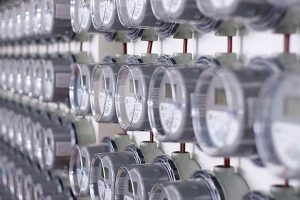MORE medium-sized enterprises and institutions are expected to exercise the option to select a preferred electricity supplier next year after the Energy Regulatory Commission (ERC) lowered the required threshold to join the retail market.
In a statement on Tuesday, the ERC said it approved the lowering of the threshold to 100 kilowatts (kW) of average monthly peak demand to be eligible for the Retail Competition and Open Access (RCOA) and the Retail Aggregation Program (RAP). The previous threshold had been 500 kW.
The ruling complies with the Electric Power Industry Reform Act (EPIRA) and fulfills its mandate to foster competition, drive efficiency, and empower electricity consumers.
ERC Chairman and Chief Executive Officer Francis Saturnino C. Juan said more end-users will be able to access better prices, improved service quality and innovation.
“Lowering the contestability threshold to 100 kW and implementing it in a deliberate and orderly fashion marks a significant advancement in unlocking the full potential of open access and consumer choice in the Philippines,” Mr. Juan said.
“This move underscores our commitment to fostering a fair, competitive, and transparent electricity market that delivers enduring benefits to consumers,” he added.
RCOA is a customer-choice program which gives qualified customers the power to choose their energy supplier, while RAP allows multiple electricity consumers to combine to meet the required consumption threshold.
Over 2,300 customers have signed up for RCOA while 73 groups have aggregated to join RAP, representing a combined demand of nearly 31 megawatts.
The ERC said it has taken a phased and coordinated approach to ensure market readiness and operational stability.
With the new threshold set to take effect on June 26 next year, the ERC said the transition period will allow distribution utilities and retail metering service providers time to procure and install metering equipment.
The ERC has also issued rules governing the implementation of advanced metering infrastructure (AMI) by distribution utilities and authorized entities, which will guide the rollout of smart metering systems.
AMI, which integrates smart meters, communication platforms, and data management systems, enables two-way information flow between consumers and utilities. This provides real-time data on electricity consumption, automated billing, outage detection, and remote service management.
According to the ERC, the rules reflect technological advancements, global best practices, and evolving consumer and market needs, while ensuring data privacy and cybersecurity.
“The new AMI Rules mark a milestone in the digital transformation of the power distribution sector. By enabling real-time data exchange and empowering both utilities and consumers, we are laying the foundation for a smarter, more secure, and inclusive energy future,” Mr. Juan said. — Sheldeen Joy Talavera

